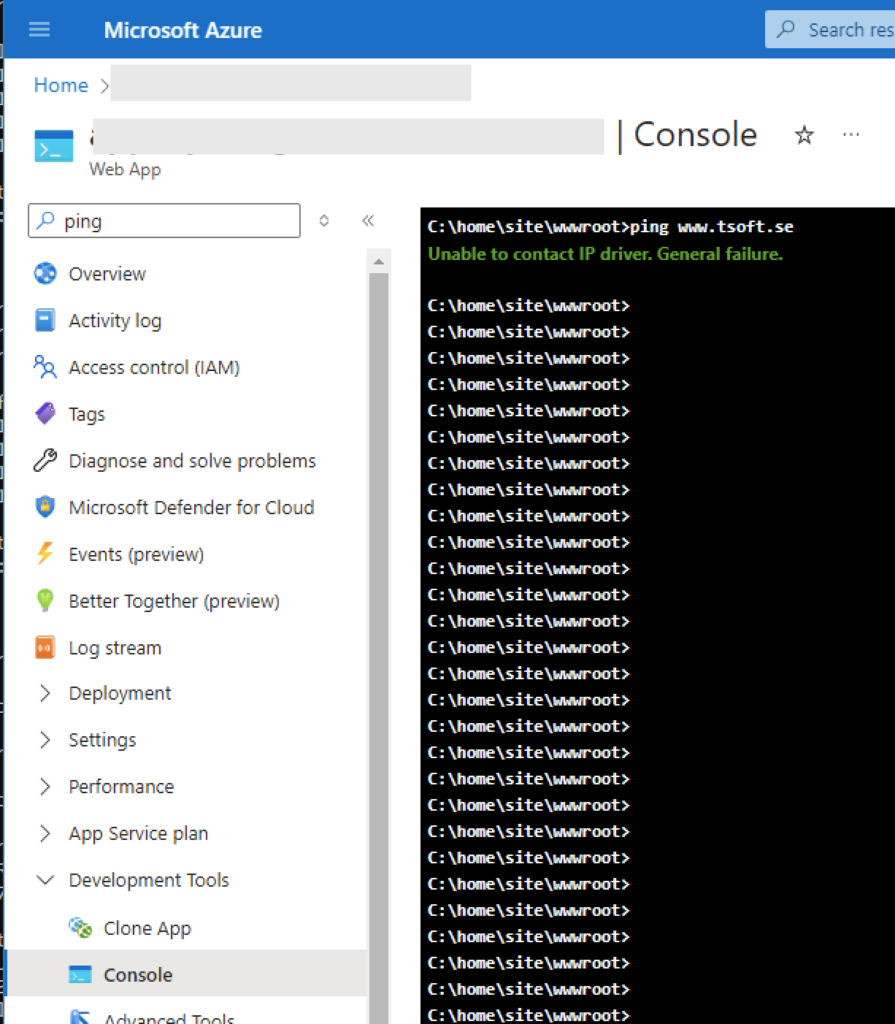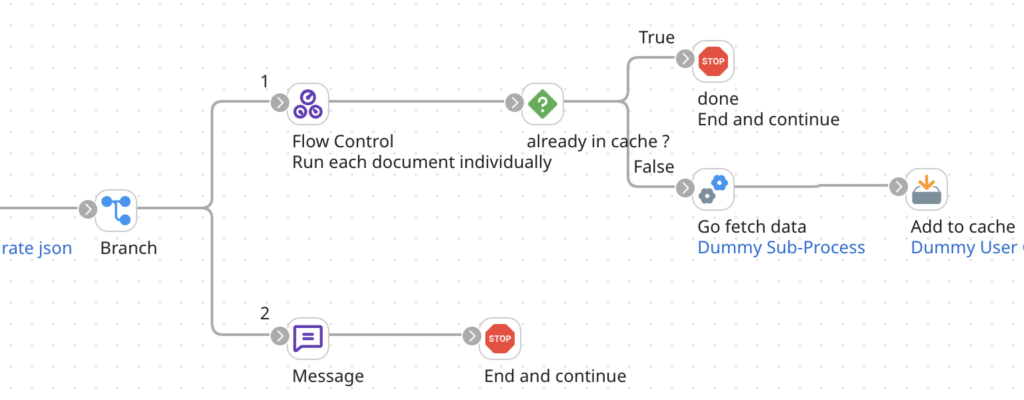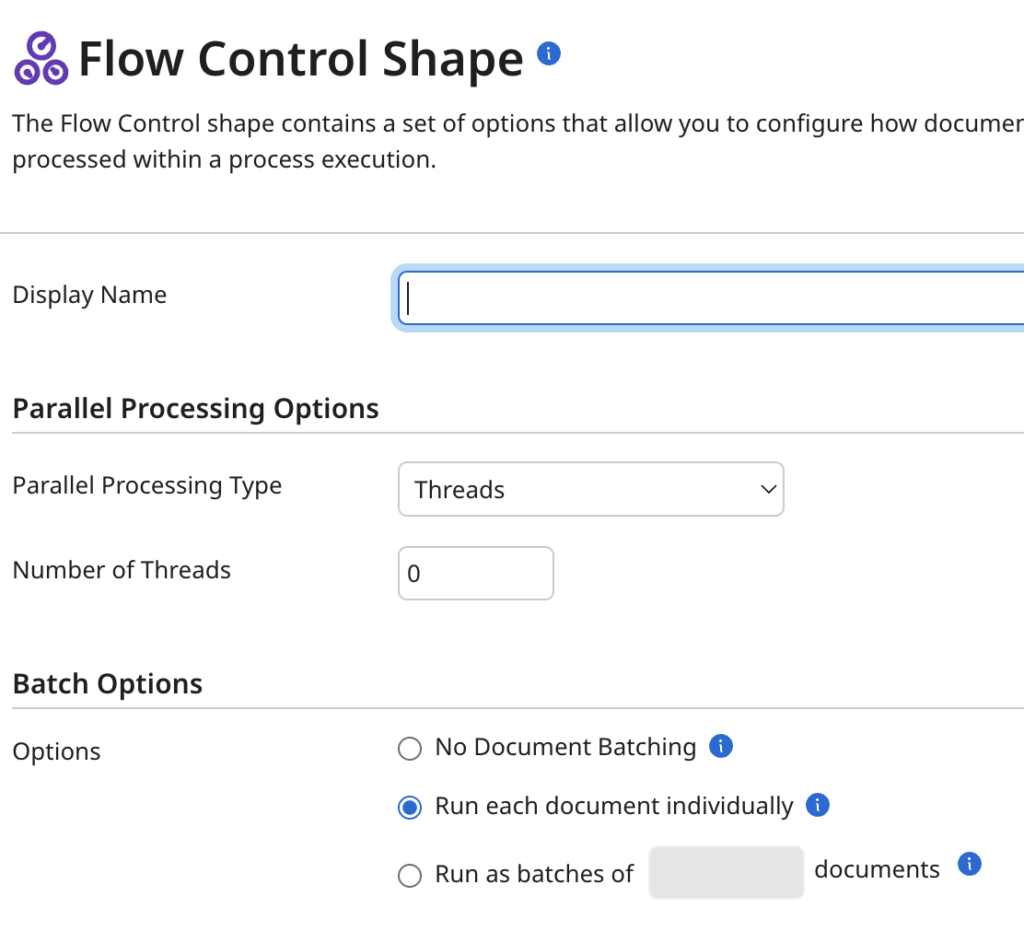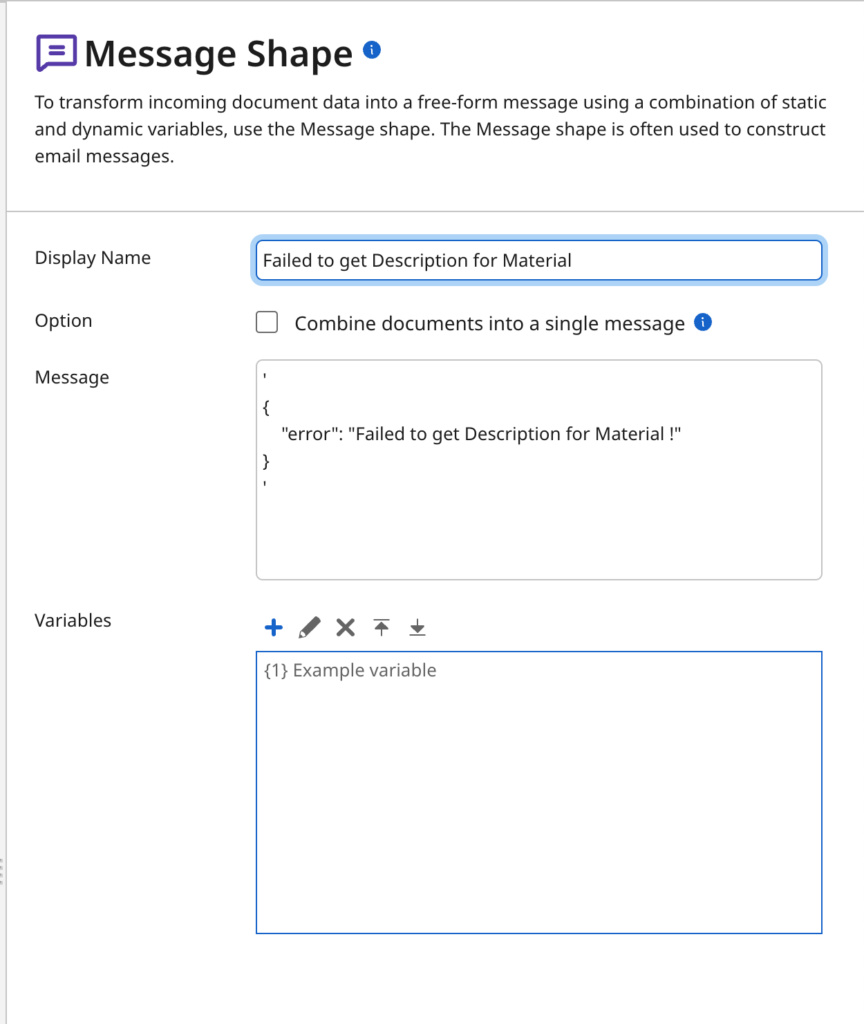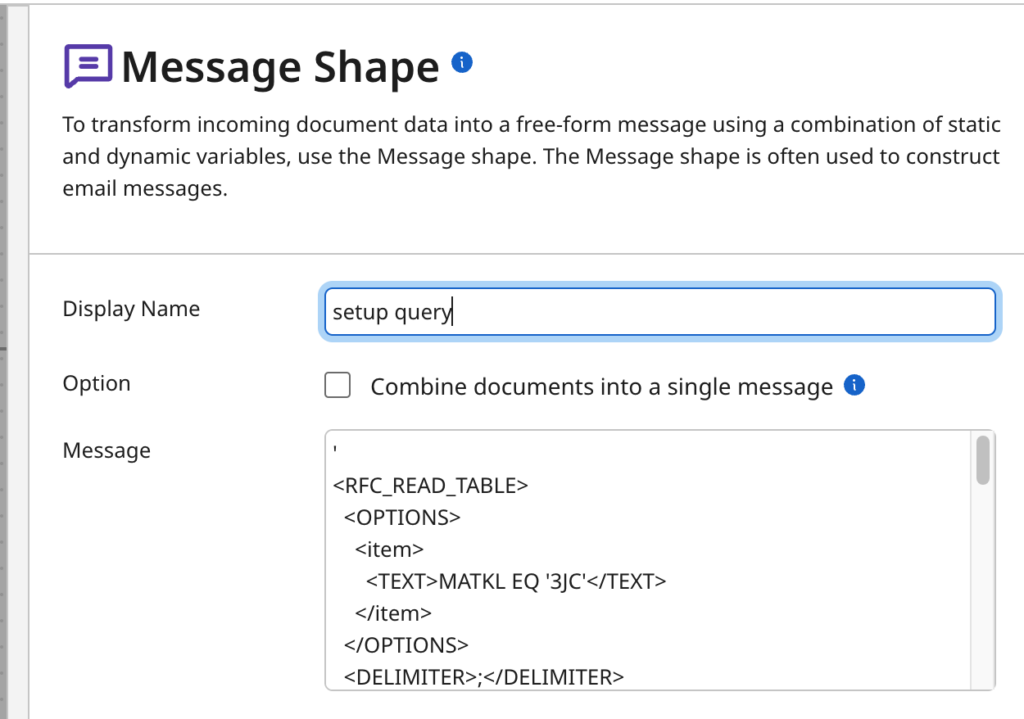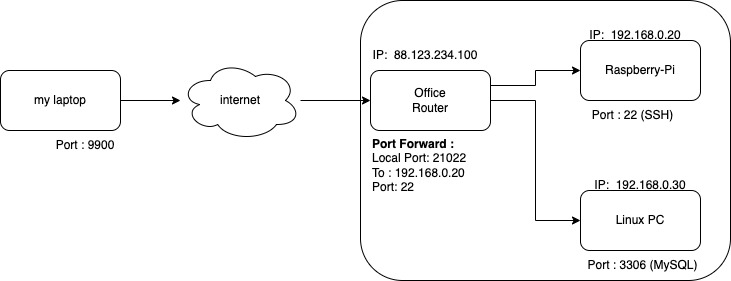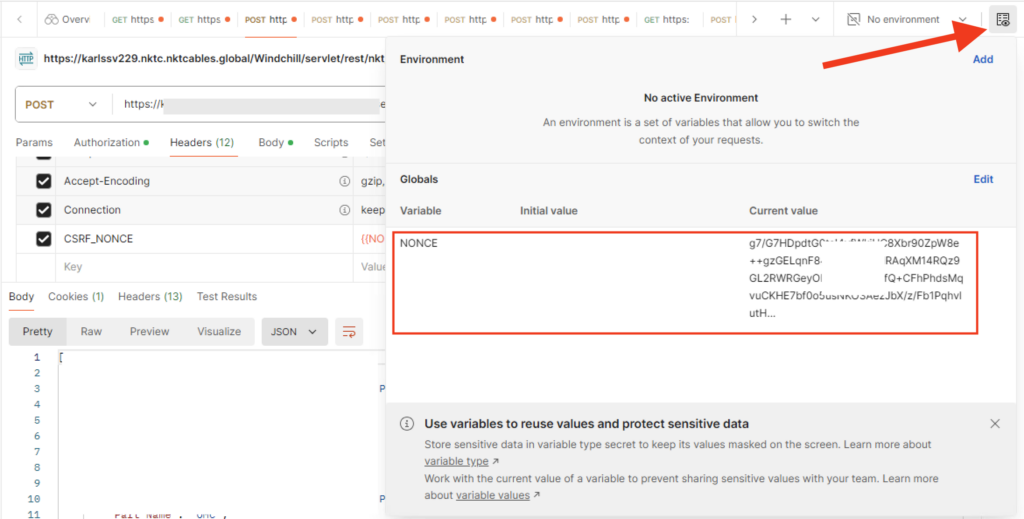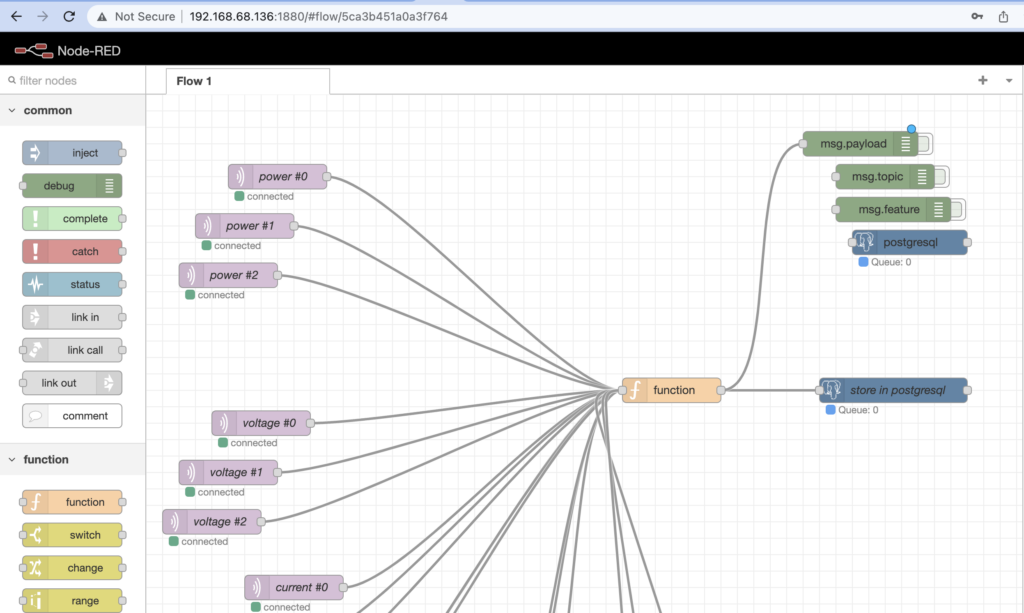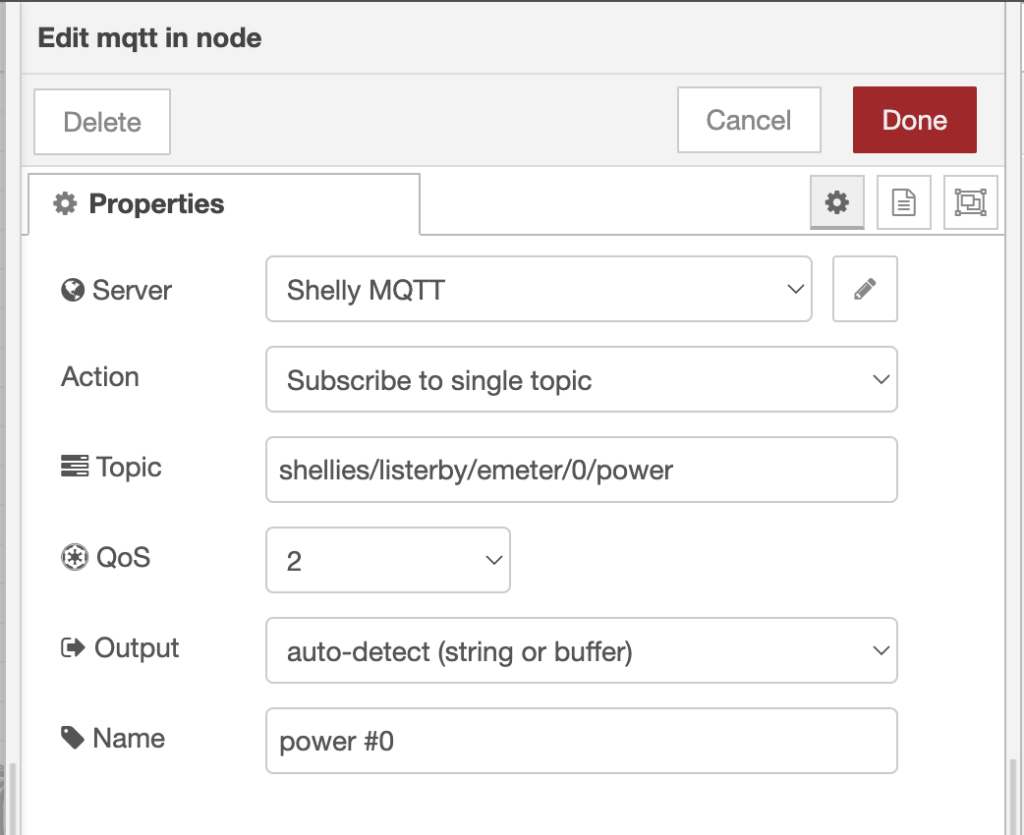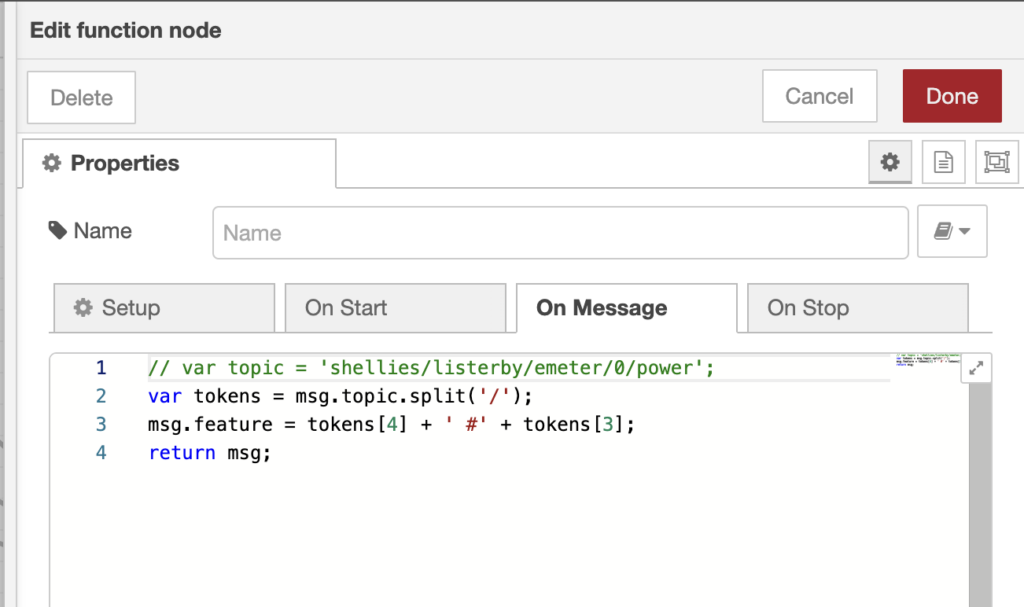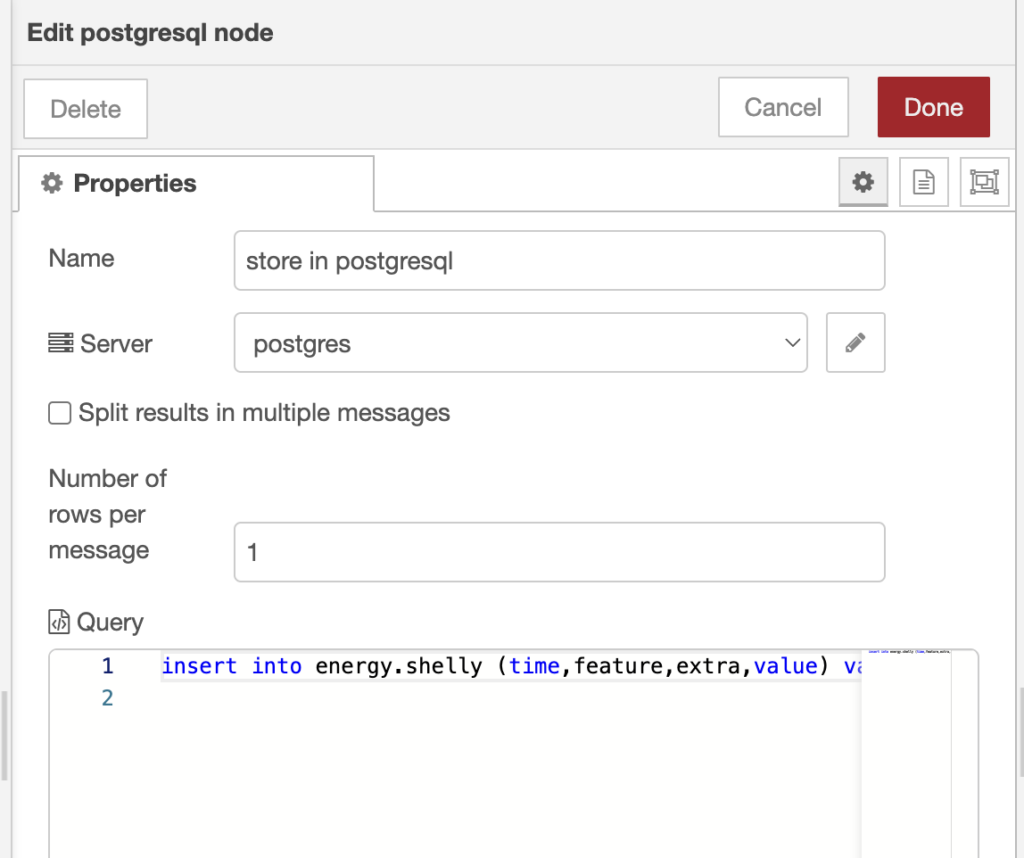tobias@raspberrypi:~ $ mosquitto_sub -d -v -t "#"
Client (null) sending CONNECT
Client (null) received CONNACK (0)
Client (null) sending SUBSCRIBE (Mid: 1, Topic: #, QoS: 0, Options: 0x00)
Client (null) received SUBACK
Subscribed (mid: 1): 0
Client (null) received PUBLISH (d0, q0, r1, m0, 'shellies/listerby/online', ... (4 bytes))
shellies/listerby/online true
Client (null) received PUBLISH (d0, q0, r1, m0, 'shellies/listerby/announce', ... (144 bytes))
shellies/listerby/announce {"id":"listerby","model":"SHEM-3","mac":"C45BBE6B2438","ip":"192.168.68.112","new_fw":false,"fw_ver":"20220324-123835/v1.11.8-3EM-fix-g0014dcb"}
Client (null) received PUBLISH (d0, q0, r1, m0, 'shellies/listerby/info', ... (1053 bytes))
shellies/listerby/info {"wifi_sta":{"connected":true,"ssid":"famEriksson","ip":"192.168.68.112","rssi":-70},"cloud":{"enabled":false,"connected":false},"mqtt":{"connected":true},"time":"21:44","unixtime":1656186279,"serial":1,"has_update":false,"mac":"C45BBE6B2438","cfg_changed_cnt":0,"actions_stats":{"skipped":0},"relays":[{"ison":true,"has_timer":false,"timer_started":0,"timer_duration":0,"timer_remaining":0,"overpower":false,"is_valid":true,"source":"input"}],"emeters":[{"power":3146.87,"pf":1.00,"current":13.83,"voltage":227.95,"is_valid":true,"total":3926419.2,"total_returned":537.4},{"power":2722.25,"pf":1.00,"current":11.85,"voltage":229.71,"is_valid":true,"total":2290723.1,"total_returned":101.5},{"power":2720.61,"pf":1.00,"current":11.86,"voltage":229.33,"is_valid":true,"total":2185493.1,"total_returned":561.9}],"total_power":8589.73,"fs_mounted":true,"update":{"status":"unknown","has_update":false,"new_version":"","old_version":"20220324-123835/v1.11.8-3EM-fix-g0014dcb"},"ram_total":49440,"ram_free":30280,"fs_size":233681,"fs_free":155620,"uptime":7}
Client (null) received PUBLISH (d0, q0, r1, m0, 'shellies/listerby/relay/0', ... (2 bytes))
shellies/listerby/relay/0 on
Client (null) received PUBLISH (d0, q0, r1, m0, 'shellies/listerby/emeter/0/power', ... (6 bytes))
shellies/listerby/emeter/0/power 432.77
Client (null) received PUBLISH (d0, q0, r1, m0, 'shellies/listerby/emeter/0/pf', ... (4 bytes))
shellies/listerby/emeter/0/pf 0.83
Client (null) received PUBLISH (d0, q0, r1, m0, 'shellies/listerby/emeter/0/current', ... (4 bytes))
shellies/listerby/emeter/0/current 2.24
Client (null) received PUBLISH (d0, q0, r1, m0, 'shellies/listerby/emeter/0/voltage', ... (6 bytes))
shellies/listerby/emeter/0/voltage 232.12
Client (null) received PUBLISH (d0, q0, r1, m0, 'shellies/listerby/emeter/0/total', ... (9 bytes))
shellies/listerby/emeter/0/total 3939215.8
Client (null) received PUBLISH (d0, q0, r1, m0, 'shellies/listerby/emeter/0/total_returned', ... (5 bytes))
shellies/listerby/emeter/0/total_returned 537.4
Client (null) received PUBLISH (d0, q0, r1, m0, 'shellies/listerby/emeter/0/energy', ... (3 bytes))
shellies/listerby/emeter/0/energy 472
Client (null) received PUBLISH (d0, q0, r1, m0, 'shellies/listerby/emeter/0/returned_energy', ... (1 bytes))
shellies/listerby/emeter/0/returned_energy 0
Client (null) received PUBLISH (d0, q0, r1, m0, 'shellies/listerby/emeter/1/power', ... (5 bytes))
shellies/listerby/emeter/1/power 83.62
Client (null) received PUBLISH (d0, q0, r1, m0, 'shellies/listerby/emeter/1/pf', ... (4 bytes))
shellies/listerby/emeter/1/pf 0.79
Client (null) received PUBLISH (d0, q0, r1, m0, 'shellies/listerby/emeter/1/current', ... (4 bytes))
shellies/listerby/emeter/1/current 0.45
Client (null) received PUBLISH (d0, q0, r1, m0, 'shellies/listerby/emeter/1/voltage', ... (6 bytes))
shellies/listerby/emeter/1/voltage 233.39
Client (null) received PUBLISH (d0, q0, r1, m0, 'shellies/listerby/emeter/1/total', ... (9 bytes))
shellies/listerby/emeter/1/total 2298273.3
Client (null) received PUBLISH (d0, q0, r1, m0, 'shellies/listerby/emeter/1/total_returned', ... (5 bytes))
shellies/listerby/emeter/1/total_returned 101.5
Client (null) received PUBLISH (d0, q0, r1, m0, 'shellies/listerby/emeter/1/energy', ... (2 bytes))
shellies/listerby/emeter/1/energy 83
Client (null) received PUBLISH (d0, q0, r1, m0, 'shellies/listerby/emeter/1/returned_energy', ... (1 bytes))
shellies/listerby/emeter/1/returned_energy 0
Client (null) received PUBLISH (d0, q0, r1, m0, 'shellies/listerby/emeter/2/power', ... (6 bytes))
shellies/listerby/emeter/2/power 162.23
Client (null) received PUBLISH (d0, q0, r1, m0, 'shellies/listerby/emeter/2/pf', ... (4 bytes))
shellies/listerby/emeter/2/pf 0.71
Client (null) received PUBLISH (d0, q0, r1, m0, 'shellies/listerby/emeter/2/current', ... (4 bytes))
shellies/listerby/emeter/2/current 0.97
Client (null) received PUBLISH (d0, q0, r1, m0, 'shellies/listerby/emeter/2/voltage', ... (6 bytes))
shellies/listerby/emeter/2/voltage 232.96
Client (null) received PUBLISH (d0, q0, r1, m0, 'shellies/listerby/emeter/2/total', ... (9 bytes))
shellies/listerby/emeter/2/total 2187798.7
Client (null) received PUBLISH (d0, q0, r1, m0, 'shellies/listerby/emeter/2/total_returned', ... (5 bytes))
shellies/listerby/emeter/2/total_returned 561.9
Client (null) received PUBLISH (d0, q0, r1, m0, 'shellies/listerby/emeter/2/energy', ... (3 bytes))
shellies/listerby/emeter/2/energy 140
Client (null) received PUBLISH (d0, q0, r1, m0, 'shellies/listerby/emeter/2/returned_energy', ... (1 bytes))
shellies/listerby/emeter/2/returned_energy 0
Client (null) received PUBLISH (d0, q0, r1, m0, 'shellies/announce', ... (144 bytes))
shellies/announce {"id":"listerby","model":"SHEM-3","mac":"C45BBE6B2438","ip":"192.168.68.112","new_fw":false,"fw_ver":"20220324-123835/v1.11.8-3EM-fix-g0014dcb"}
Client (null) received PUBLISH (d0, q0, r0, m0, 'shellies/listerby/emeter/0/power', ... (6 bytes))
shellies/listerby/emeter/0/power 437.96
Client (null) received PUBLISH (d0, q0, r0, m0, 'shellies/listerby/emeter/0/pf', ... (4 bytes))
shellies/listerby/emeter/0/pf 0.84
Client (null) received PUBLISH (d0, q0, r0, m0, 'shellies/listerby/emeter/0/current', ... (4 bytes))
shellies/listerby/emeter/0/current 2.25
Client (null) received PUBLISH (d0, q0, r0, m0, 'shellies/listerby/emeter/0/voltage', ... (6 bytes))
shellies/listerby/emeter/0/voltage 232.10
Client (null) received PUBLISH (d0, q0, r0, m0, 'shellies/listerby/emeter/0/total', ... (9 bytes))
shellies/listerby/emeter/0/total 3939215.8
Client (null) received PUBLISH (d0, q0, r0, m0, 'shellies/listerby/emeter/0/total_returned', ... (5 bytes))
shellies/listerby/emeter/0/total_returned 537.4
Client (null) received PUBLISH (d0, q0, r0, m0, 'shellies/listerby/emeter/1/power', ... (5 bytes))
shellies/listerby/emeter/1/power 83.62
Client (null) received PUBLISH (d0, q0, r0, m0, 'shellies/listerby/emeter/1/pf', ... (4 bytes))
shellies/listerby/emeter/1/pf 0.79
Client (null) received PUBLISH (d0, q0, r0, m0, 'shellies/listerby/emeter/1/current', ... (4 bytes))
shellies/listerby/emeter/1/current 0.45
Client (null) received PUBLISH (d0, q0, r0, m0, 'shellies/listerby/emeter/1/voltage', ... (6 bytes))
shellies/listerby/emeter/1/voltage 233.38
Client (null) received PUBLISH (d0, q0, r0, m0, 'shellies/listerby/emeter/1/total', ... (9 bytes))
shellies/listerby/emeter/1/total 2298273.3
Client (null) received PUBLISH (d0, q0, r0, m0, 'shellies/listerby/emeter/1/total_returned', ... (5 bytes))
shellies/listerby/emeter/1/total_returned 101.5
Client (null) received PUBLISH (d0, q0, r0, m0, 'shellies/listerby/emeter/2/power', ... (6 bytes))
shellies/listerby/emeter/2/power 182.31
Client (null) received PUBLISH (d0, q0, r0, m0, 'shellies/listerby/emeter/2/pf', ... (4 bytes))
shellies/listerby/emeter/2/pf 0.73
Client (null) received PUBLISH (d0, q0, r0, m0, 'shellies/listerby/emeter/2/current', ... (4 bytes))
shellies/listerby/emeter/2/current 1.07
Client (null) received PUBLISH (d0, q0, r0, m0, 'shellies/listerby/emeter/2/voltage', ... (6 bytes))
shellies/listerby/emeter/2/voltage 232.97
Client (null) received PUBLISH (d0, q0, r0, m0, 'shellies/listerby/emeter/2/total', ... (9 bytes))
shellies/listerby/emeter/2/total 2187798.7
Client (null) received PUBLISH (d0, q0, r0, m0, 'shellies/listerby/emeter/2/total_returned', ... (5 bytes))
shellies/listerby/emeter/2/total_returned 561.9
